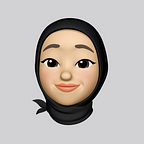User personas in UX design: what makes them important
Supercharge your work as a designer 📈
If you’re in the user experience (UX) design field, you’ve probably heard about user persona before. It’s basically a fictional character whose behavior and characteristics represent a specific group of users. User personas are typically 1–2 pages long, with sections such as demographics, goals, needs, frustrations, and behavior depending on what you need. If done and used correctly, they could easily amp up your work as a designer.
In this article, you’ll find out how your design project could benefit by utilizing user personas and learn how to create one.
What Makes User Personas Important
Along my journey in learning UX design, I’ve come to the conclusion that understanding the user is the foundation for your works. The bad news is that doing it isn’t easy, but the good news is user personas can help you with it.
The following points are based on Patrick Faller’s article, with a couple of my thoughts mixed in.
✨ Build empathy
In order to make a successful product for your users, you must have empathy. Having a user persona can help you step into the user’s shoes whenever you need it, and you’ll need it a lot. By having a persona, you’ll know what users want/think/need which will hopefully lead you to understand why they want/think/need it.
You shouldn’t name a persona based on a friend’s name (or yours) since that could lead to bias.
🧭 Provide direction
Whenever you’re feeling lost on what should be the best solution, you could always refer to the persona, instead of just relying on team member’s partial opinions. This allows you to know which feature to prioritize because you know which of them the user persona would need more.
A user persona shouldn’t be the only tool that helps you prioritize. A designer should also consider the business needs.
💬 Communicate research findings
User personas are representations based on real data. Therefore, it is sound to use them as a way to convey those data. User personas summarize research findings so that stakeholders could easily understand from any level of expertise or background.
Creating a User Persona + A Case Example
User personas are usually created in the Understand phase in a User Centered Design framework to help translate user research into UX design. To help you with this, I’m also going to give a sample case from my current team project: A legal access platform for SMMEs.
Collect information about your users
You have many ways to conduct user research. You can do an in-depth interview, a survey, diary logs, or anything you can think of that’s the right fit for your needs and limitations.
Because our current case is to build a platform for SMMEs, it would make sense to collect our data from SMME owners. They could range from gen Z up to baby boomers, but of course depending on your team’s limitations, you’re not expected to be able to collect them all. Intrinsically, user personas are specific not general.
Find their behavioral pattern
List the different behavior patterns you found on your users, and then group your users into each of those points. When you see a pattern that has a cluster of users, you can include it in your user persona(s).
From the research, we found that they generally have middle-income, didn’t really found success from searching for legal help by themselves, and budget conscious.
Create persona(s) and prioritize them
In practice, designers could find themselves ending with multiple personas. That’s completely okay, though it can be confusing when you’re dealing with a lot instead of helping your decision-making process. When dealing with multiple personas, it’s important to choose which one to prioritize. This will later assist you to develop the most useful features.
Once we found our user’s behavior patterns, we discover that our gen Zs, millennials, and baby boomers all created different user personas. But from our research, we know that our users are mostly millennials. We then decided our millennial user persona to be our primary and the rest secondary, and so on.
Result
After you’ve followed the steps above to create a user persona, you’ll successfully get something like this as a result:
The user persona above is the primary user persona of the example case from my current team project. As you can see, this one persona only revolves around millennial end-users. It covers their basic demographics, likely characteristics, needs/problems, and journey. What sections you decide will be put in the persona is completely based on what you need for the project. Here’s why we picked those particular sections:
- Early Adopter Characteristics: This is useful when creating a design to engage the users through intention building.
- Needs/Problems: What we need to know to make a useful product that fills the gap in our target user’s life.
- Journey: This is to understand how the user thinks when searching for a service so that we can fulfill their needs seamlessly.
Besides the sections mentioned before, there are numerous others you can choose from, such as motivations, pain points, considerations, goals, etc.
Conclusion
Now that you know how user persona could be useful to your project, try it out! It may sound pretty complex in the beginning, but like all UX tools, they’re going to simplify your design works in future phases. Just remember, user personas can evolve and be iterated just like any design deliverables on a design process. So, don’t be afraid to spice them back up later.
